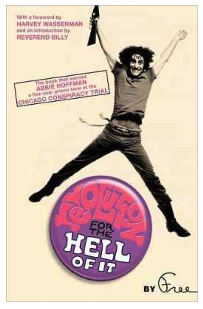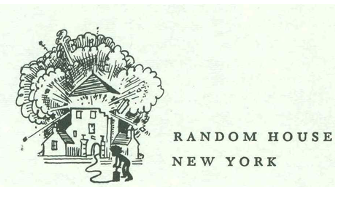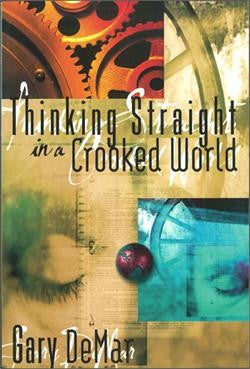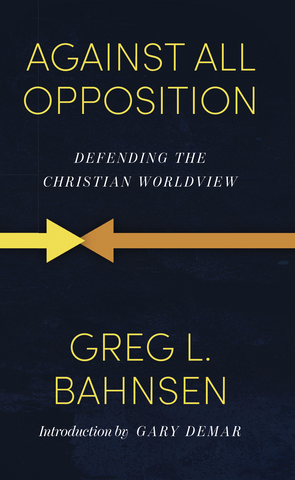Violence in the name of “democracy” has almost always been a tool of the political left. I’m not talking about crazy leftists like a supporter of presidential candidate Bernie Sanders who in 2017 opened fire with a rifle during a baseball practice of the Republican team for the annual Congressional Baseball Game that severely injured Rep. Steve Scalise of Louisiana. He was hit by a bullet that “travelled across his pelvis, fracturing bones, injuring internal organs, and causing severe bleeding.” Senator Rand Paul said he heard “as many as 50 shots.”
That same year, Paul was assaulted by a neighbor, Rene Boucher. In August 2019, part of Paul’s lung was removed because of the injuries he suffered during the attack.
Boucher’s attorney, Matthew Baker, described it as “a very regrettable dispute between two neighbors over a matter that most people would regard as trivial.” According to a memorandum filed by Baker the dispute was over Paul repeatedly leaving tree yard debris near his property line with his neighbor. Rand Paul and his wife deny this; they claim that the “media” have “misrepresented” this “from the beginning” and that the attack was “politically motivated.” They claim that Boucher had threatened Donald Trump earlier and that he was “a vocal hater” of Trump and the GOP.
Leftism by revolutionary means is fundamental to many movements throughout history. We don’t have to go back very far in history for support. Leaders of student movements in the 1960s used violence to further their anti-establishment causes to establish a new world order in the name of the people. Carl Oglesby, president of the ultra-leftist Students for a Democratic Society (SDS), said, “Revolutions do not take place in velvet boxes…. Nuns will be raped and bureaucrats will be disemboweled.”[1] Some of his revolutionary followers took him seriously.
The counter-culture decade of the 1960s was described as the “decade of anger and rebellion.” A generation of young people were said to be rootless. Some travelled to Europe and the Far East to “find themselves.” The theological assumptions of previous generations were dismissed as irrelevant to a new way of thinking. The old gods were replaced with new gods reminiscent of the French revolutionaries.
By the late 1960s, there was a resurgence of left-wing radicalism that led to violence. On May 7, 1967, just weeks before the Newark riot, Greg Calvert, a member of Students for a Democratic Society, described its members as “post-communist revolutionaries” who “are working to build a guerrilla force in an urban environment. We are actively organizing sedition.”[2] The SDS was a growing radical movement made up of college students. The rhetoric of the SDS was at its core anti-government but with its goal to take over the governmental structures for their own purposes, and they have succeeded. “SDS organizers denounced ‘oppressors,’ ‘exploiters,’ and ‘the Al Capones who run this country.’ The university was depicted as a ‘colony’ of ‘the military-industrial complex’ and a ‘midwife to murder.’ ‘Imperialism’ was offered as a convenient scapegoat for every frustration and failure.”[3] A keynote speech at a 1962 SDS convention praised the freedom riders, not for furthering civil rights but for their “radicalizing” potential, their “clear-cut demonstration for the sterility of legalism.” The speaker continued:
It is not by … “learning the rules of the legislative game” that we will succeed in creating the kind of militant alliances that our struggle requires. We shall succeed through force—through the exertion of such pressure as will force our reluctant allies to accommodate to us, in their own interest.[4]
Tom Hayden, a former SDS organizer and strategist, member of the California General Assembly, and one-time husband of Jane Fonda, intoned the following in 1967: “Perhaps the only forms of action appropriate to the angry people are violent. Perhaps a small minority, by setting ablaze New York and Washington, could damage this country forever in the court of world opinion. Urban guerrillas are the only realistic alternative at this time to electoral politics or mass armed resistance.”[5]
“Burn, Baby, Burn”
Hayden’s anti-government revolutionary rhetoric bordered on the fringes of sedition and treason. His speech inflamed so many radical extremists that some blame him for agitating fragile race relations in Newark, New Jersey, causing nearly a week of rioting in the summer of 1967. While Hayden was not directly involved, he seemed to approve of using violence as a way of “shattering the status quo.” The August 24, 1967, issue of The New York Review of Books includes an article in which Hayden wrote:
The role of organized violence is now being carefully considered. During a riot, for instance, a conscious guerrilla can participate in pulling police away from the path of people engaged in attacking stores. He can create disorder in new areas the police think are secure. He can carry the torch, if not all the people, to white neighborhoods and downtown business districts. If necessary, he can successfully shoot to kill.
The guerrilla can employ violence effectively during times of apparent “peace,” too. He can attack, in the suburbs or slums, with paint or bullets, symbols of racial oppression.
These tactics of disorder will be defined by the authorities as criminal anarchy. But it may be that disruption will create possibilities of meaningful change…. Violence can contribute to shattering the status quo, but only politics and organization can transform it.[6]
Nearly two thousand people were arrested during the Newark strife. Snipers killed a policeman, and police responded with wild gunfire, killing a 74-year-old bystander and wounding others. When the anarchy subsided, twenty-four people had been killed. The chaos did not stop with sniper fire and looting. The Newark Fire Department recorded 122 fires in the first twenty-four hours of the riots. A total of 250 fires were set, thirteen of which were considered serious.
Who can forget the “Burn, Baby, Burn” slogan of Watts and Detroit? In 1967 Detroit became a war zone. In five days, firebugs ignited an estimated 225 buildings. Wind-whipped flames burned twice that many more. The rhetorical goal of these revolutionaries was supposedly a reaction to past injustices and a desire to build a better society on the remaining ashes. But actions speak louder than words. “The cities burned, while the kids kicked in the windows, cut hoses, and danced in the streets. The nation watched them on the evening news, black faces shining in the glare of fires, grinning as they passed TV’s and cases of liquor out through the broken windows—scattering down dark streets—falling occasionally to a guardsman’s shot. And their elders, whites, and many blacks as well, shuddered at the nihilistic new litany that welled up now in place of ‘We Shall Overcome’: Burn, Baby, Burn!”[7]
“Che Lives!”
Some campus radicals in the 1960s believed “that violence may be necessary.” A student from the University of California at Berkeley stated that she understood why certain groups riot. “I feel the same frustrations in myself, the same urge to violence.”[8] The campus at Berkeley led the way. In 1967 the national secretary of SDS declared himself to be a disciple of Che Guevera: “Che’s message is applicable to urban America as far as the psychology of guerrilla action goes. … Che sure lives in our hearts.” “Black power,” he added, “is absolutely necessary.” White student activists noted that “black nationalists are stacking Molotov cocktails and studying how they can hold a few city blocks in an uprising, how to keep off the fire brigade and the police so that the National Guard must be called out….”[9]
In the July 11, 1968, issue of The Village Voice, Marvin Garson, the pamphleteer of the Free Speech Movement, recounted with pride the bombings which had been the calling card of campus radicals from Berkeley and its environs:
The series of successful and highly popular bombings which have occurred here recently: the steady bombing of the electric power system from mid-March when the lines leading to the Lawrence Radiation Lab were knocked down, to June 4, when on the morning of the California primary 300,000 homes in Oakland were cut off; the dynamiting of a bulldozer engaged in urban renewal destruction of Berkeley’s funkiest block; three separate bombings of the Berkeley draft board; and finally, last Tuesday night, the dynamiting of the checkpoint kiosk at the western entrance to the University campus, a symbol of the Board of Regent’s property rights in the community of scholars.[10]
Civil unrest and purposeful destruction of the nation’s infrastructure and authority institutions was the order of the day in the late 1960s. “On September 3, 1968, The New York Times reported that the city of Berkeley was declared to be in a state of civil disaster; the city authorities invoked emergency police powers, and the campus of the university was placed under curfew rules.[11]
Left-wing Weathermen were even more radical. They too were into bombs. Fortunately, they were also inept. “On March 6, 1970, a tremendous explosion demolished a fashionable Greenwich Village townhouse, and from the flaming wreckage fled two SDS ‘Weatherwomen,’ members of the SDS terrorist faction. In the rubble police found remains of a ‘bomb factory’ and three bodies, including one of the organizers of the 1968 Columbia University rioting and another of a ‘regional traveler’ who had helped spark the Kent State buildup. Four days later in Maryland two close associates of Student Non-Violent Coordinating Committee (SNCC) firebrand ‘Rap’ Brown blew themselves to smithereens while apparently transporting a bomb to the courthouse where their cohort was to stand trial on an inciting riot charge…. Also, in 1970 a Black Panther carrying a bomb along a Minneapolis street blasted himself to bits. Despite the carnage to themselves, Panther and Weatherman terrorists succeeded in setting off bombs in the New York City police headquarters, the U.S. Capitol, and scores of other public and corporate buildings across the nation.”[12] In addition, they had succeeded in setting off bombs in the Pentagon and several major courthouses. “These were the bombings they took credit for publicly. The full extent of their terrorist activities remains unknown.”[13]
Revolution for the Hell of It
On the cover of the book Revolution for the Hell of It, Abbie Hoffman,[14] the late Yippie spokesman of the 1960s, is pictured with a rifle in his hand leaping for joy.

Since Hoffman was something of a jokester, some might claim that an armed and jubilant Hoffman gracing the cover of a book was nothing more than a satirical barb at the establishment. The content of the book tells a different story. Hoffman envisioned and encouraged today’s sexual revolution and the general disembowelment of morality. Hoffman went further by supplying information that he hoped would lead to the violent overthrow of “the system”:
To enter the twenty-first century, to have revolution in our lifetime, male supremacy must be smashed,… A militant Gay Liberation Front has taught us that our stereotypes of masculinity were molded by the same enemies of life that drove us out of Lincoln Park. The words “chick” and “fag” and the deep-rooted attitudes they imply must be purged from the New Nation. Cultural Revolution means a disavowal of the values; all values held by our parents who inhabit and sustain the decaying institutions of a dying Pig Empire.[15]
Hoffman’s rhetoric about revolution was just a warm-up. In Steal This Book he gave instructions on how to build stink bombs, smoke bombs, Sterno bombs, aerosol bombs, pipe bombs, and Molotov Cocktails. Hoffman’s updated version of the Molotov Cocktail consisted of a glass bottle filled with a mixture of gasoline and Styrofoam, turning the slushy blend into a poor man’s version of napalm. The flaming gasoline-soaked Styrofoam was designed to stick to policemen when it exploded.[16] Helpful drawings on how to make the incendiary devices are included. The book also told people how they could live for free (The word “Free” was on the cover. “Many readers followed his advice and stole the book, leading many bookstores to refuse to carry it.”)
Let’s Blow Up Something!
In Woodstock Nation, Hoffman updated his revolutionary tactics. This time, mainstream Random House was the publisher. Next to Random House’s name on the title page, there is an illustration of a man using dynamite to blow up a house.

This same illustration appears in Hoffman’s Steal This Book. The theme of both books is how to blow up the system, literally. Hoffman informs us that “the best material available on military tactics in revolutionary warfare” is available through “the U.S. Government Printing Office, Washington, D.C.”
Another publication that’s probably the most valuable work of its kind available is called Physical Security and has more relevant information than Che Guevara’s Guerilla Warfare. The chapter on Sabotage is extremely precise and accurate with detailed instructions on the making of all sorts of homemade bombs and triggering mechanisms. That information, combined with Army Installations in the Continental United States and a lot of guts, can really get something going.[17]
Of course, Hoffman never directly advocates blowing up anything or anyone. “I ain’t saying you should use any of this information, in fact for the records of the FBI, I say right now ‘Don’t blow up your local draft board or other such holy places.’ You wouldn’t want to get the Government Printing Office indicted for conspiracy, would you now?”[18] He was only making the information available. You know, freedom of expression and all of that. Then he reproduces pages from the Department of the Army Field Manual dealing with “Disguised Incendiary Devices,” “Mechanical Delay Devices,” and pipe bombs.[19]
Short and Selective Memories
Liberals have short and selective memories. “Righteous violence” was rationalized by the front-line New Left leadership in the 1960s in the same way that it is rationalized by those who want us to “understand the plight of Islamic extremists.”
The use of violence was justified, many in the New Left comforted themselves, because theirs was a violence to end all violence, a liberating and righteous violence that would rid the world of a system that deformed and destroyed people. Such glorious ends justified, even ennobled, violent means.[20]
Organizations like Students for a Democratic Society (SDS) and the Student Nonviolent Coordinating Committee (SNCC) used violent rhetoric almost from their inception in the early 1960s. John Lewis, the very liberal Democrat representative from Georgia, boasted when he addressed the March on Washington in August 1963, “We will march through the South, … the way Sherman did. We shall pursue our own ‘scorched earth’ policy and burn Jim Crow to the ground—nonviolently. We shall crack the South into a thousand pieces and put them back together in the image of democracy.”[21]

Thinking Straight in a Crooked World
The nursery rhyme “There Was a Crooked Man” is an appropriate description of how sin affects us and our world. We live in a crooked world of ideas evaluated by crooked people. Left to our crooked nature, we can never fully understand what God has planned for us and His world. God has not left us without a corrective solution. He has given us a reliable reference point in the Bible so we can identify the crookedness and straighten it.

Against All Opposition
An apologetic methodology that claims Christians should be “open,” “objective,” and “tolerant” of all opinions when they defend the Christian faith is like a person who plans to stop a man from committing suicide by taking the hundred-story plunge with him, hoping to convince the lost soul on the way down. No one in his right mind would make such a concession to foolishness. But Christians do it all the time when they adopt the operating presuppositions of unbelievers. There are no “neutral” assumptions about reality.
[1] In a speech by Carl Oglesby at the Washington Peace March, November 27, 1965. Quoted in Os Guinness, The Dust of Death: The Sixties Counterculture and How It Changed America Forever (Wheaton, IL: Crossway Books, 1994), 112.
[2] New York Times (May 7, 1967). Quoted in Eugene H. Methvin, The Rise of Radicalism: The Social Psychology of Messianic Extremism (New Rochelle, NY: Arlington House, 1973), 497 and The Riot Makers: The Technology of Social Demolition (New Rochelle, New York: Arlington House, 1970), 27.
[3] Methvin, Rise of Radicalism, 504.
[4] Thomas Kahn, “The Political Significance of the Freedom Riders,” in Mitchell Cohen and Dennis Hale, eds., The New Student Left (Boston, Massachusetts: Beacon Press, 1966), 59, 63. Quoted in Rothman and Lichter, Roots of Radicalism, 13.
[5] Quoted in Methvin, Rise of Radicalism, 505.
[6] Quoted in Riot Makers, 51.
[7] Anthony Esler, Bombs, Beards, and Barricades: 150 years of Youth in Revolt (New York: Stein and Day, 1971), 271.
[8] Lewis S. Feuer, The Conflict of Generations: The Character and Significance of Student Movements (New York: Basic Books, 1969), 478.
[9] Lewis S. Feuer, The Conflict of Generations: The Character and Significance of Student Movements (New York: Basic Books, 1969), 478.
[10] Quoted in Feuer, The Conflict of Generations, 479.
[11] Feuer, The Conflict of Generations, 479.
[12] Methvin, Rise of Radicalism, 513.
[13] Rothman and Lichter, Roots of Radicalism, 42.
[14] Hoffman committed suicide with a overdose from 150 phenobarbital tablets and alcohol at age 52 in April 1989. “A Flower in a Clenched Fist,” Time (April 24, 1989), 23.
[15] Abbie Hoffman, Revolution for the Hell of It (New York: Pocket Books, [1968] 1970), 3.
[16] Abbie Hoffman, Steal This Book (New York: Pirate Editions, 1971), 170-79.
[17] Abbie Hoffman, Woodstock Nation: A Talk-Rock Album (New York: Random House, 1969), 114.
[18] Hoffman, Woodstock Nation, 114.
[19] Hoffman, Woodstock Nation, 115-116.
[20] Richard J. Ellis, The Dark Side of the Left: Illiberal Egalitarianism in America (Lawrence, KS: University Press of Kansas, 1997), 137.
[21] John Lewis, “A Serious Revolution,” in Massimo Teodori, ed., The New Left: A Documentary History (Indianapolis, IN: Bobbs-Merrill, 1969), 102.















